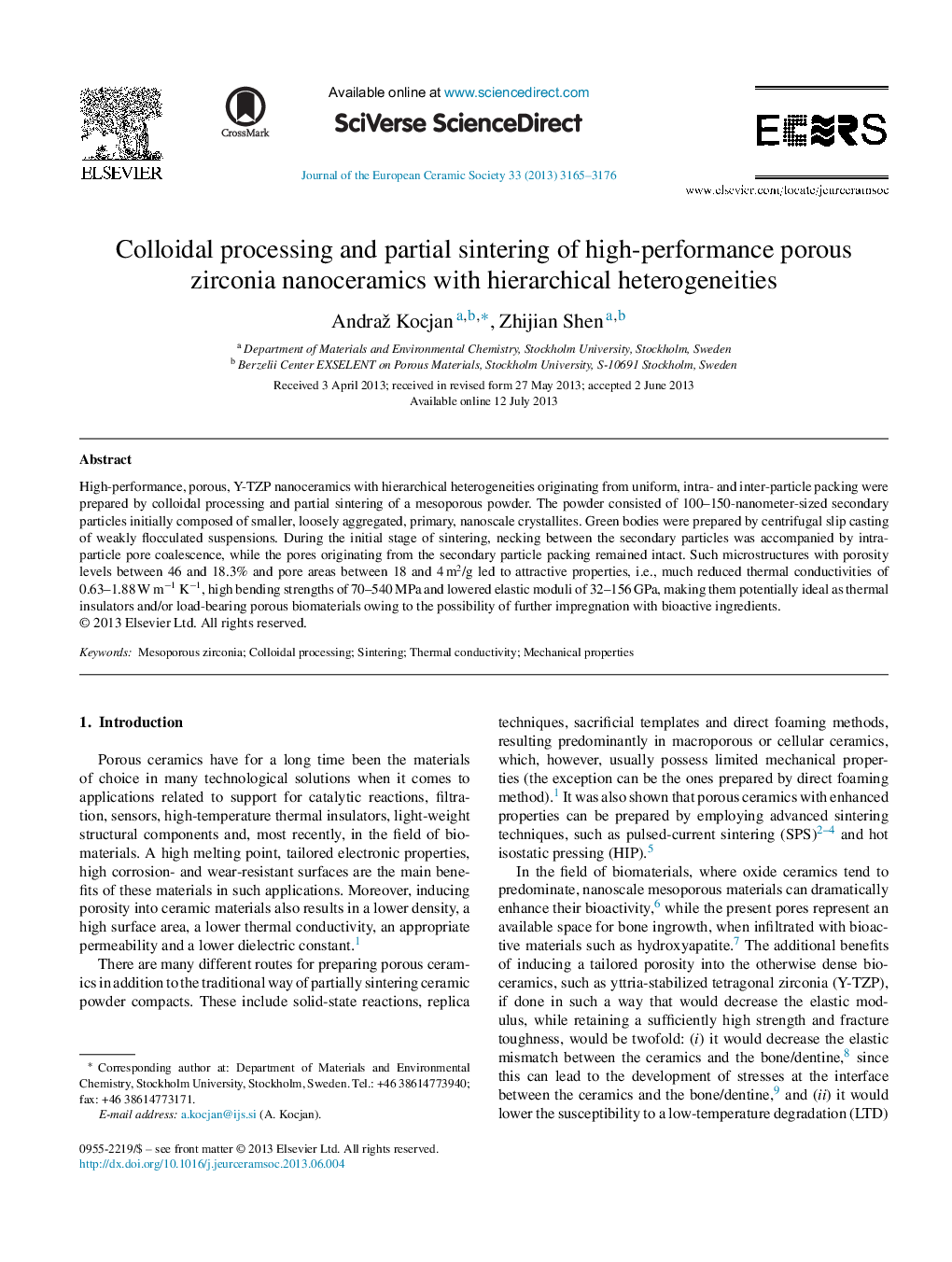| Article ID | Journal | Published Year | Pages | File Type |
|---|---|---|---|---|
| 7899116 | Journal of the European Ceramic Society | 2013 | 12 Pages |
Abstract
High-performance, porous, Y-TZP nanoceramics with hierarchical heterogeneities originating from uniform, intra- and inter-particle packing were prepared by colloidal processing and partial sintering of a mesoporous powder. The powder consisted of 100-150-nanometer-sized secondary particles initially composed of smaller, loosely aggregated, primary, nanoscale crystallites. Green bodies were prepared by centrifugal slip casting of weakly flocculated suspensions. During the initial stage of sintering, necking between the secondary particles was accompanied by intra-particle pore coalescence, while the pores originating from the secondary particle packing remained intact. Such microstructures with porosity levels between 46 and 18.3% and pore areas between 18 and 4Â m2/g led to attractive properties, i.e., much reduced thermal conductivities of 0.63-1.88Â WÂ mâ1Â Kâ1, high bending strengths of 70-540Â MPa and lowered elastic moduli of 32-156Â GPa, making them potentially ideal as thermal insulators and/or load-bearing porous biomaterials owing to the possibility of further impregnation with bioactive ingredients.
Related Topics
Physical Sciences and Engineering
Materials Science
Ceramics and Composites
Authors
Andraž Kocjan, Zhijian Shen,
